Audrey Sutherland is the Nature Writer I Always Needed
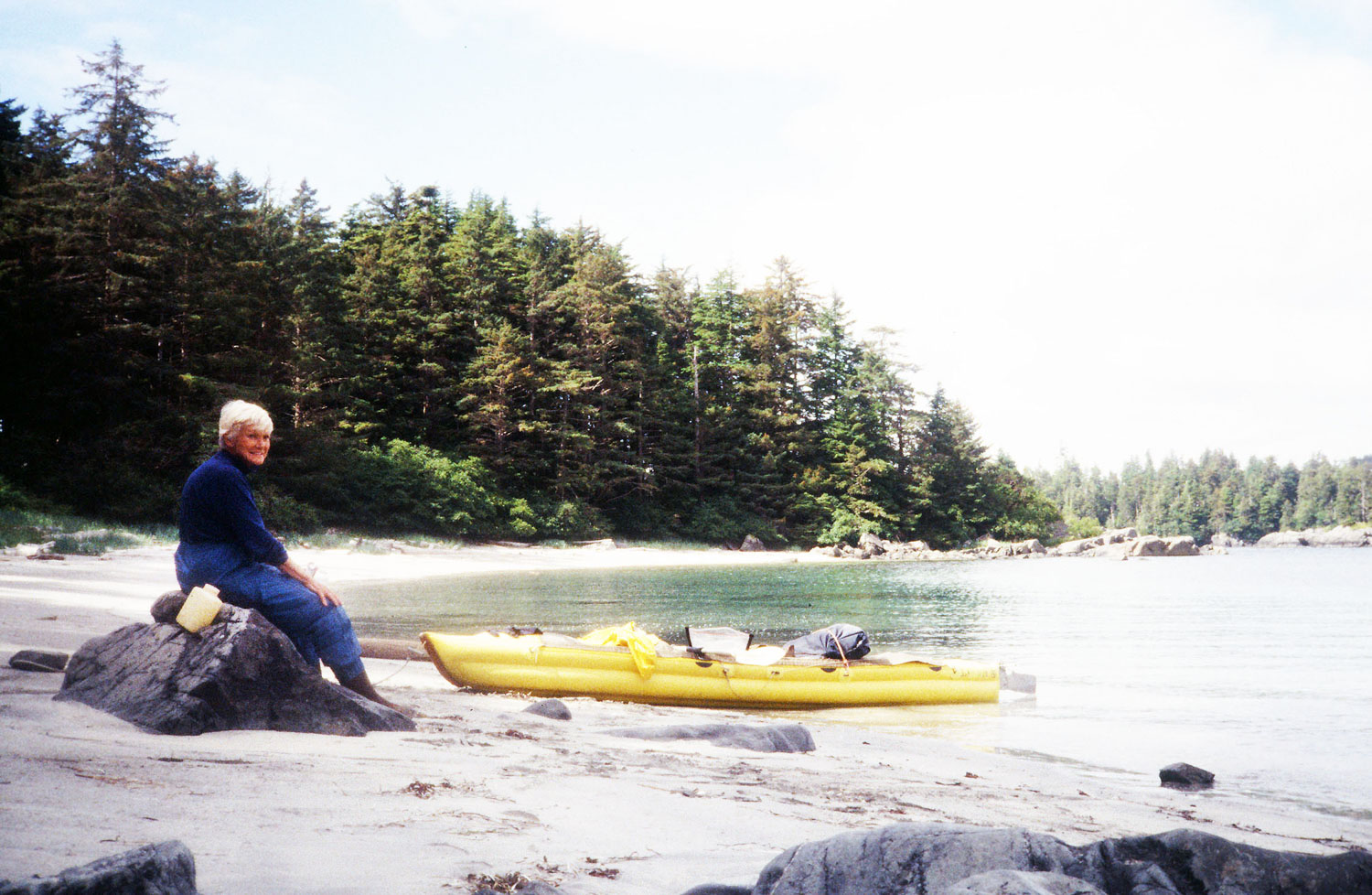
Audrey Sutherland is the Nature Writer I Always Needed
Review of Paddling North: A Solo Adventure Along the Inside Passage
By Hailey Hirst
I was the teenager who covered her walls in torn out National Geographic pages and I was that twenty-something blogger who began flowery posts about first backpacking trips with the same quotes that generations have loved so threadbare that we’ve torn them through and poked holes in their fabric. But those often-repeated words don’t keep us warm the way they used to.
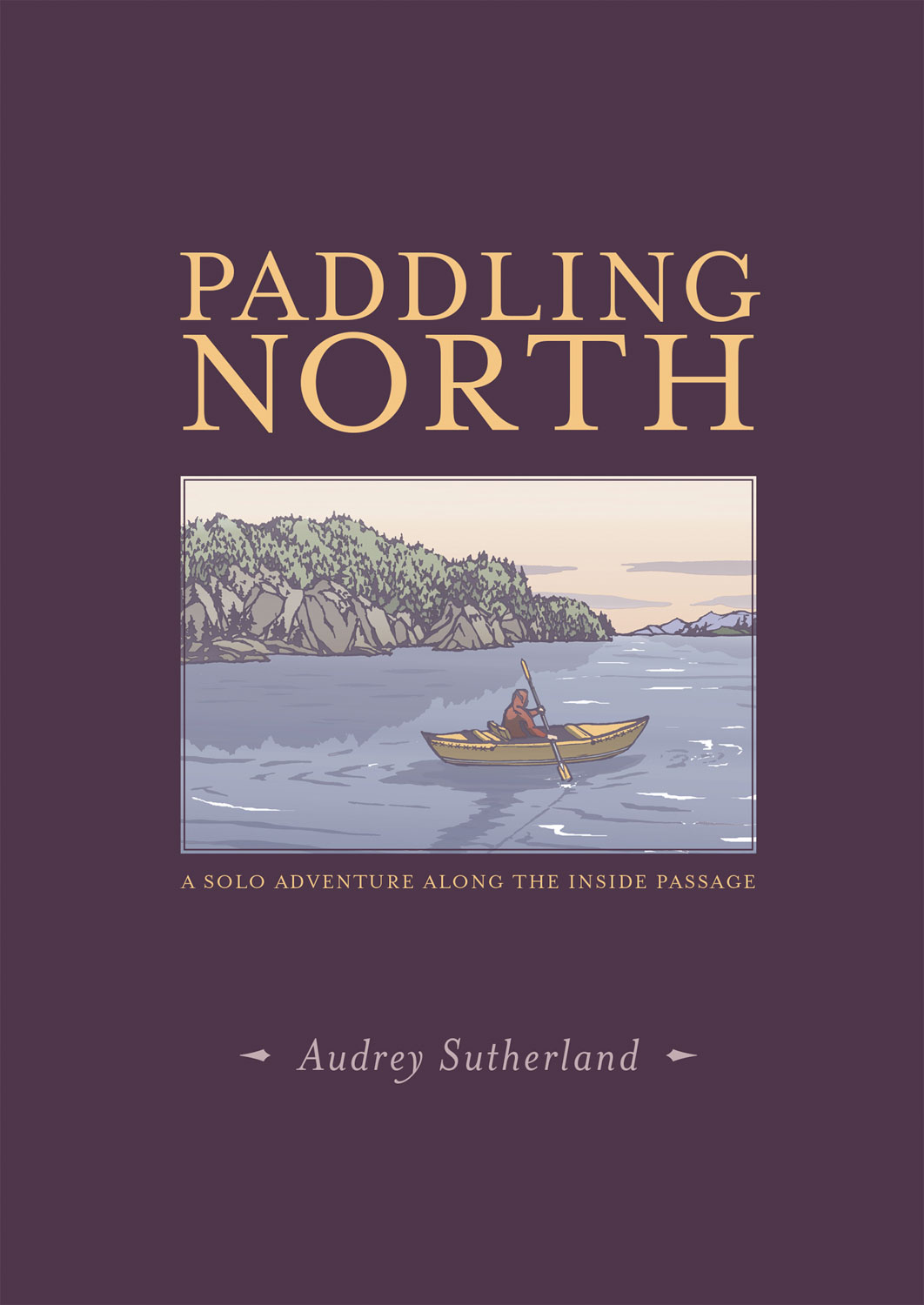 If I could flip back in my own book, or reach through the curtain of time that hangs between then and now, I would hand younger me this softbound copy of Paddling North.
If I could flip back in my own book, or reach through the curtain of time that hangs between then and now, I would hand younger me this softbound copy of Paddling North.
I’d tell her that women move through the world differently than those men you admire so much. Their voices may sometimes be quieter, and their books on fewer lists, their words not printed on t-shirts and postcards, but they set forth into the wilderness, too, and they have written sentences you will underline in ink and yearn to stitch somehow into the cloth of your soul.
My Paddling North book is now dog-eared and written in, and I will quote Audrey Sutherland for her industriousness and inquisitive nature, and because she’s the type of person I’d like to be in my eighties (and now).
(Some of) What I learned about Audrey Sutherland and Paddling North:
Audrey preaches practice and preparation.
She was a mother, an ex-wife, a school counselor, a teacher, a fisherman, who—at 61—loaded up an inflatable boat and donned a yellow rain suit and a blue wool cap to paddle 600 miles from Ketchikan to Skagway. She would return yearly for two decades to paddle the north. It took dedication to get there, planning to make it happen, and preparation to survive it.
She was meticulous in her preparation and route planning. She spent months researching and packing, and was always improving on her paddle camping setup.
Her gear was multi-purpose and somewhat creative (including the many uses of wine-box bags: shower, seat, float…). She tested hear gear and physically readied herself with practice like intentionally capsizing and righting herself.
The emphasis on preparation, really, demonstrates what anyone can accomplish with clear goals: “Doing what you want to do isn’t a question of can you or can’t you, but deciding what your ultimate desire and capability is and then figuring out the steps to accomplishment. It’s ‘I’m going to. Now how? What gear will I need? What skills will I need? What will it cost? When will it happen? When I succeed, what next?’”
Her journeys are about personal autonomy.
Instead of touting travel as a mean of escape, or transformation, or conquest, or a vehicle to criticize how other people are doing it wrong, Audrey Sutherland’s paddling adventures and the books she wrote about them focus most sharply on personal feelings of freedom and capability.
“Always on this voyage there was a sense of space. I would stand on shore and slowly turn around, trying to absorb the limitless distance. So much of my life had been limited by the parameters of children, marriage, jobs, cities, neighbors, friends, expectations. Now there were none, and the sense of freedom was intense.”
It’s a big deal to her that she goes alone, and although she meets people along the way and references advice received, she is almost wholly reliant on her own body, gear, and mind.
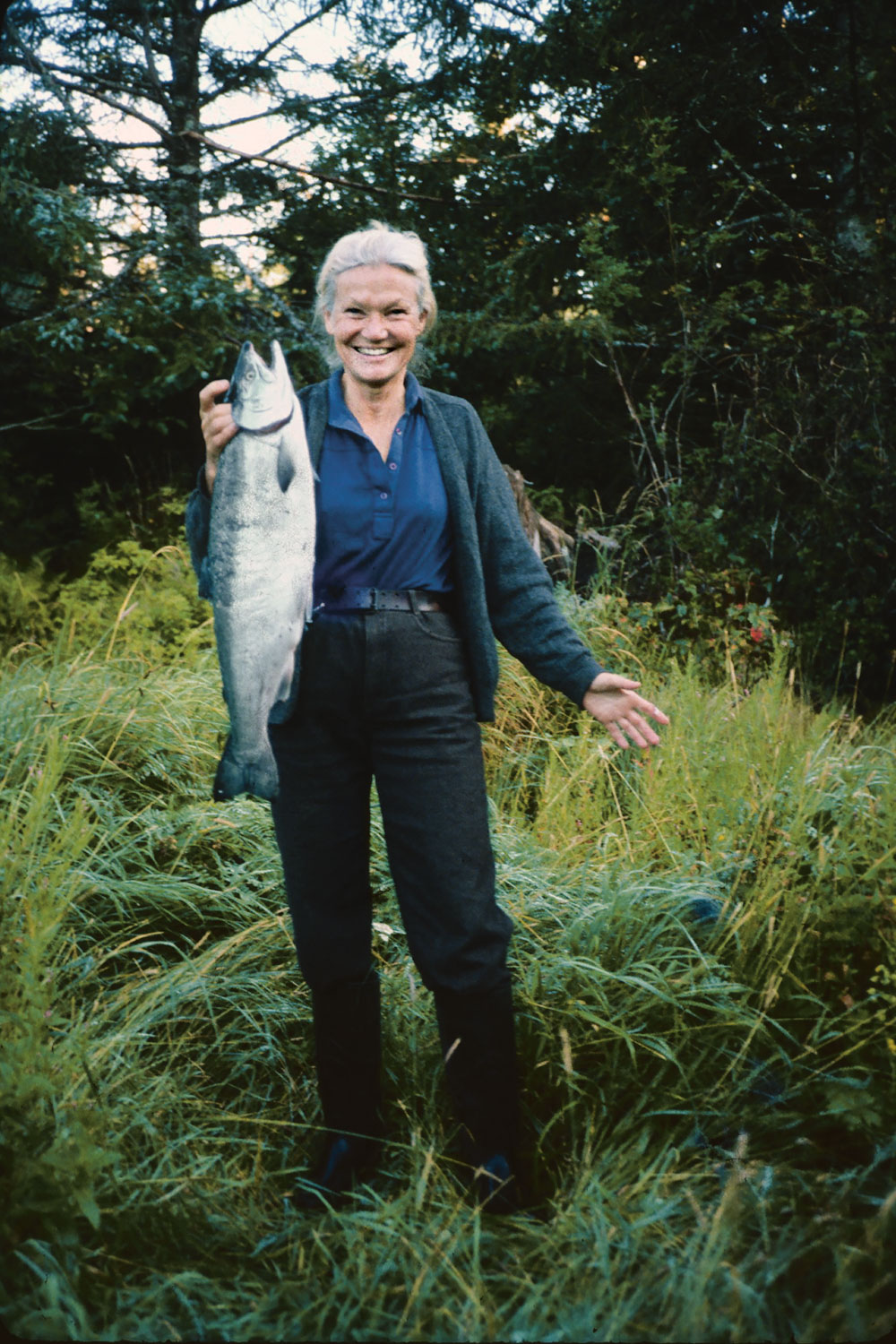
Couldn’t be fresher. Audrey Sutherland in Alaska, ca. 1995. Photo by Audrey Sutherland Collection.
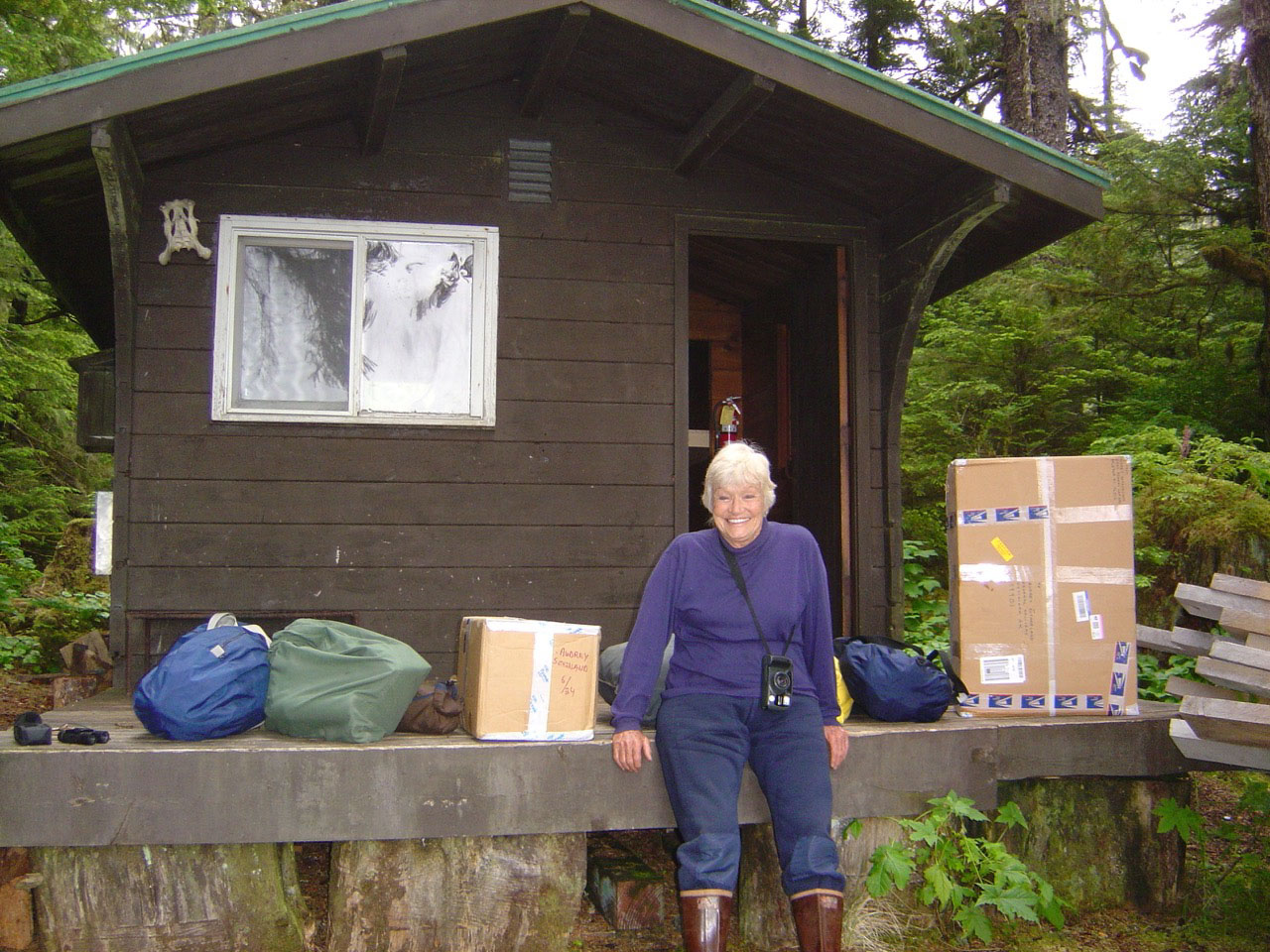
Audrey at Shipley Bay, photograph by Michelle Masden courtesy of Patagonia Books
She is part of the landscape, not separate from it.
With great respect that she is a passerby in these Northern ecosystems, Audrey observes how things are connected and cares that they work together. There’s no romanticized distance or authority asserted over other forms of life. Her pace is slow, she is in the water and on the ground. She responsibly forages kelp and mussels. She talks to orcas and bears and shares a moment with a wolf. She seems to see herself as a human animal engaged in the symbiosis of the natural systems, alert to details, absorbing, feeling:
“It was partly sunny, with light winds from the west. The mind and body absorbs these things. There was no thinking process like ‘The wind is blowing in the trees. They are bending toward the east. It is a west wind.’ Instead, it all osmosed into the subconscious, and the body walked on, skin moist from the air and hair ruffling like an animal’s fur in the wind.”
Her reverence for the outdoors includes human and natural history, too.
It’s not all about being one with nature. Audrey is realistic about the ways that humanity has touched all of these places before.
On reaching a place marked “Bob’s Place” on her topographic map, she says, “Who was Bob? You must have felt, as I do, the presence of the small islands and the sheltered passages, the rise and fall of the tide, and the hum of bees feeding on thimbleberry blossoms… How long were you here and why did you leave?… Were you Tlingit? Where are the records of the people who lived in these remote places, or are they only in the memories of the people now old and dying?
“What a country this is! A sense of people here for centuries before me, yet all of them had fitted in, belonged, using this world in such small ways that it remained as if untouched until this century, with its long-lasting effects from logging and commercial fishing. Could the earth still heal itself? In a hundred years, if we ceased gouging ever deeper, would the clear-cuts grow tall and the waters again come alive with fish?”

Audrey Sutherland photographed summer ’1997. Photograph by Audrey Sutherland Collection.
Age is relative.
“At twenty-nine you say thirty isn’t old, but forty is. At fifty-nine you say sixty isn’t old, but seventy is. At eighty-nine, a lovely friend is saving for her old age. Some mornings after I’ve been in the ocean in Hawaii, I feel fourteen, and when I glance in a mirror I stop, stunned. Who is that?”
Expedition food can be a creative expression.
Audrey brought a camera and wrote meticulous journals, but it seems food was her great artistic pleasure on paddle trips. She canned and dried much of it herself in preparation. She foraged (responsibly) what she could en route. There are recipes listed in nearly every chapter, for dishes like Mussels Neapolitan and Simple Camp Curry. And at one point she decides to pickle kelp.
“Food was pleasurable to the taste, provided sheer warmth in the belly, and had the satisfaction of a creative art form, the craft of cuisine.”
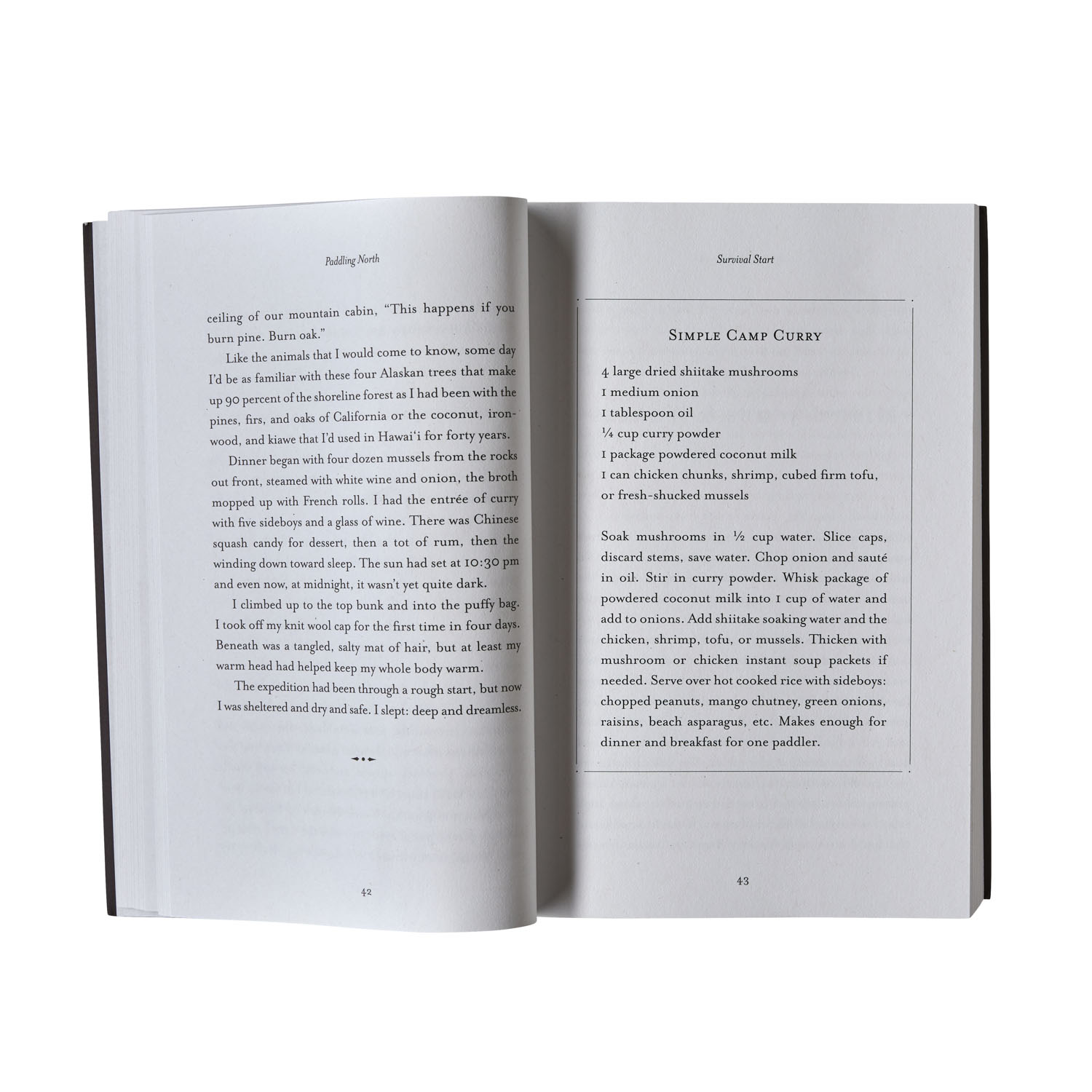
She was never afraid to go alone.
“But weren’t you afraid alone? Of what? Fear is of the unknown. I had almost learned what the boat, the gear, and the body could do. Even the sea and the weather followed patterns. I was still learning, but all the percentage figures said I was safer here than in a city or a highway.”
And in other interviews, in all her years, Audrey’s most often advice was, “Go simple. Go solo. Go now.”
She knew she was capable in body and mind, she understood that obligations and excuses can hold us back forever, and she did not wait for anyone to go with her.
Paddling North is so much of life, compressed.
Although Paddling North compresses twenty-some years of Alaska paddle trips, the crafted editing makes it a cohesive journey from place to place. It was published years after her last trip, when she was suffering the effects of dementia in her nineties, but it still feels like a true representation of the journeys as documented in her journals, not much warped by the passage of time.
It’s a somewhat quiet journey. There’s no arc of conquest, no narrative of healing or growth. The movement between locations is punctuated by a lot else, too.
“There was always a heightened awareness when I was alone, but it was even more intense when the sun was shining—as if the added distance I could see in miles outward also went inward behind the eyes and clarified the mind as well.”
Like Audrey’s thoughts must have wandered on the water, the stories flit back and forth in time—ranging continents and comparing other travel, recipes, ingenious inventions to solve specific kayak-camping problems, books she read and referenced, the gear she carried. She remembers raising her children, her marriage, past lives spent fishing, working in an office, exploring Hawaii.
Decades of life are compressed here, not to be processed or worked through, but honestly experienced in an organic way—because moving through the natural world also lets her mind wander back in time and place.
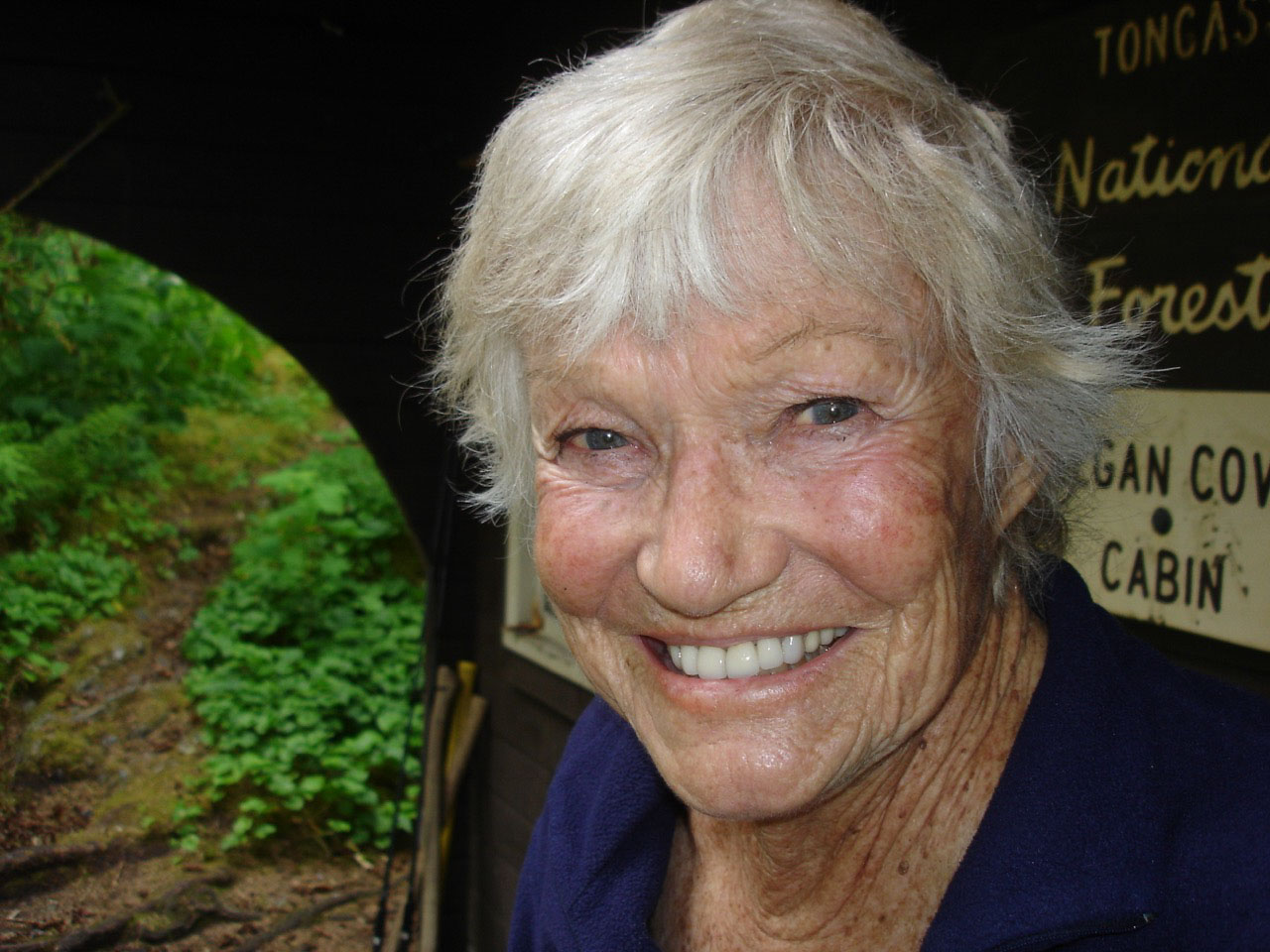
Audrey at Kegan Cove, photograph by Michelle Masden courtesy of Patagonia Books
Takeaways:
Now that I’ve sat with Paddling North and plucked quotes from its pages and savored them a little, I think what I’m impressed most with is Audrey Sutherland’s attitude. She knows confidence and capability, but no grand ego. There is a realistic explanation of the drudgery of endless rain and paddling, without whining about the discomfort. She trusts herself to plan, build, substitute, improvise, fix, and adapt—and so she does. I admire those traits as much as I do her inquisitive, open-minded (maybe holistic?) mode of experiencing things within a wide context.
For my own life, I hope for the same willingness to try, plan, and go despite the ways I let myself feel stifled by obligation, doubt, or circumstance. Things are probably not as inhibiting as I build them up to be.
According to Audrey, we’re all capable of paddling our own canoe, and we should.
“Daily we are on trial, to do a job, to make a marriage good, to find depth, serenity, and meaning in a complex, deteriorating world of politics, false values, and trivia. But rarely are we deeply challenged physically or alone. We rely on friends, on family, on a committee, on community agencies outside ourselves. To have actual survival, living or dying, depend on your own ingenuity, skill, or stamina—this is a core question we rarely face. We rarely find out if we like having only our own mind as company for days or weeks at a time.” (This quote is, appropriately, from her other book, Paddling My Own Canoe: A Solo Adventure On the Coast of Molokai)
Find Paddling North and learn more about Audrey Sutherland from Patagonia in the editorial “Go Simple. Go Solo. Go Now”, published shortly after her death.
All images are courtesy of Patagonia Books and the Audrey Sutherland Collection.
Editor’s Note: Hailey received her copy of Paddling North from Patagonia Books for review, but her opinions are all her own. This article includes Amazon Affiliate links, which provide a small commission for She Explores at no cost to you. Thank you for your support!
This is wonderful, Hailey! I needed these great reminders from Audrey. Thanks, Gale, for publishing Hailey’s essay!
So glad you enjoyed it, Beth!
I just went down an Internet rabbit hole to learn more about this awesome woman. Thanks for such a lovely essay and for the nudge of inspiration.
[…] READ: AN ODE TO THIS AUTHOR ⟶ Audrey Sutherland is the Nature Writer I Always Needed […]